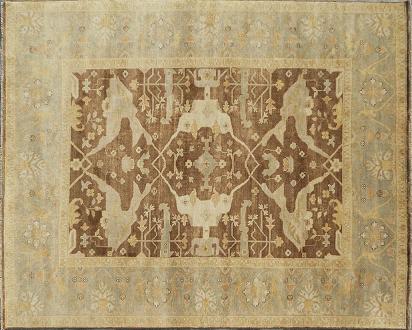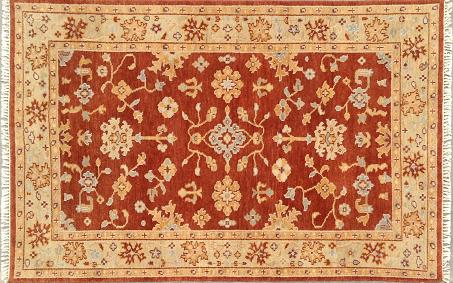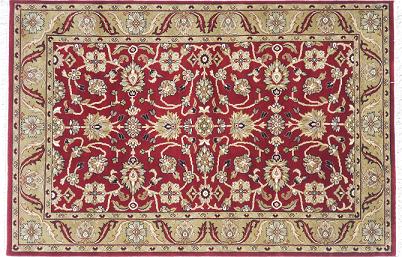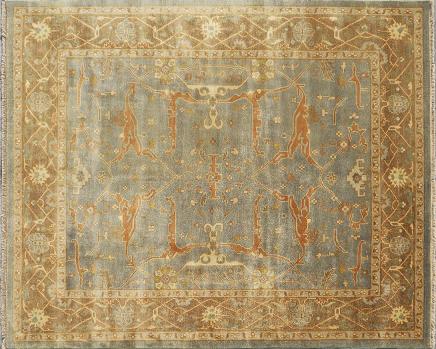F 6 Cinnabar Parprica
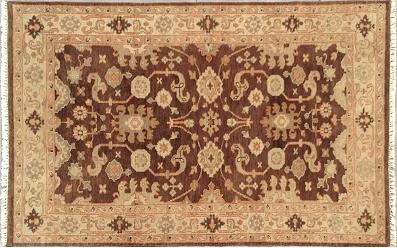
F 6 Cinnabar Parprica
F-6 Cinnabar Parprica
When you buy a hand-knotted rug, this means that a skilled weaver individually tied every knot, this creating a one-of-a-kind handmade rug. That is what makes hand-knotted rugs so special, and that is what makes them so much more expensive than all other types of area rugs. Depending on how many knots are in each square inch (50 to 160 knots per inch is typical, 400 per square inch is remarkable), it can take more than a year for one weaver to complete a 9x12 rug.
Wool, silk and cotton are the three primary materials that are used to make a hand-knotted rug. Wool is the most used material. New Zealand and South Korean wools are often mixed with local wools because they have more lanolin, which adds sheen, strength and suppleness. Silk is used primarily for accent because it is not as strong and is more expensive. Cotton is sometimes used in the foundation, but is not seen in the pile. The combination of these materials makes for an extremely strong rug.
If the price of a silk rug sounds too good to be true, the rug is probably made of cotton or rayon. Ask the rug merchant to pull a strand of thread from the rug and burn. If it's silk, it will smell like burning hair. Burned rayon and cotton will smell like burned paper.
Hand-knotted rugs can withstand high traffic, and will begin to wear out after 20 or more years of use. High traffic areas include hallways, family room and entryway. Medium traffic areas include the dining room and home office. Low traffic areas include bedrooms and formal living room.
The Hand-Knotting Process
After the loom is set up, the warp (or vertical) threads are tied on the loom. These are the threads that eventually become the fringe of the rug. The weft runs horizontally and intertwines with the warp to create the foundation of the rug. The weft also creates the selvedges (or edges) of the rug, which hold the rug together. The knots, made of wool or silk, are then tied to the warp threads. The weaver uses a knife (or a hook) to cut the knot, ties the knot with his or her hands, and finishes the process by securing and tightening the knot with a comb-like tool. An experienced weaver can tie one knot every two seconds.
Advantages
Owning a hand-knotted rug is truly owning a “one-of-a-kind” handmade piece of art.
Hand-knotted rugs are extremely durable.
Hand-knotted rugs can last several generations and become a valuable family heirloom.
Disadvantages
There are varying degrees of quality among hand-knotted rugs on the market.
Hand-knotted rugs are the most expensive type of rug.
It is difficult to determine the age, origin and materials used in making a hand-knotted rug.
Send Enquiry
